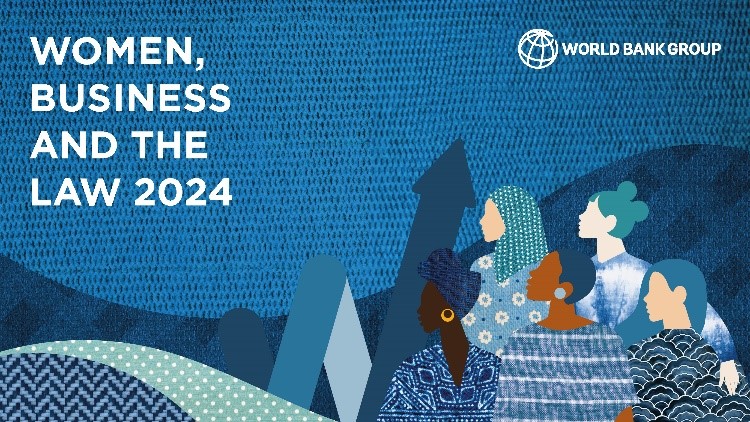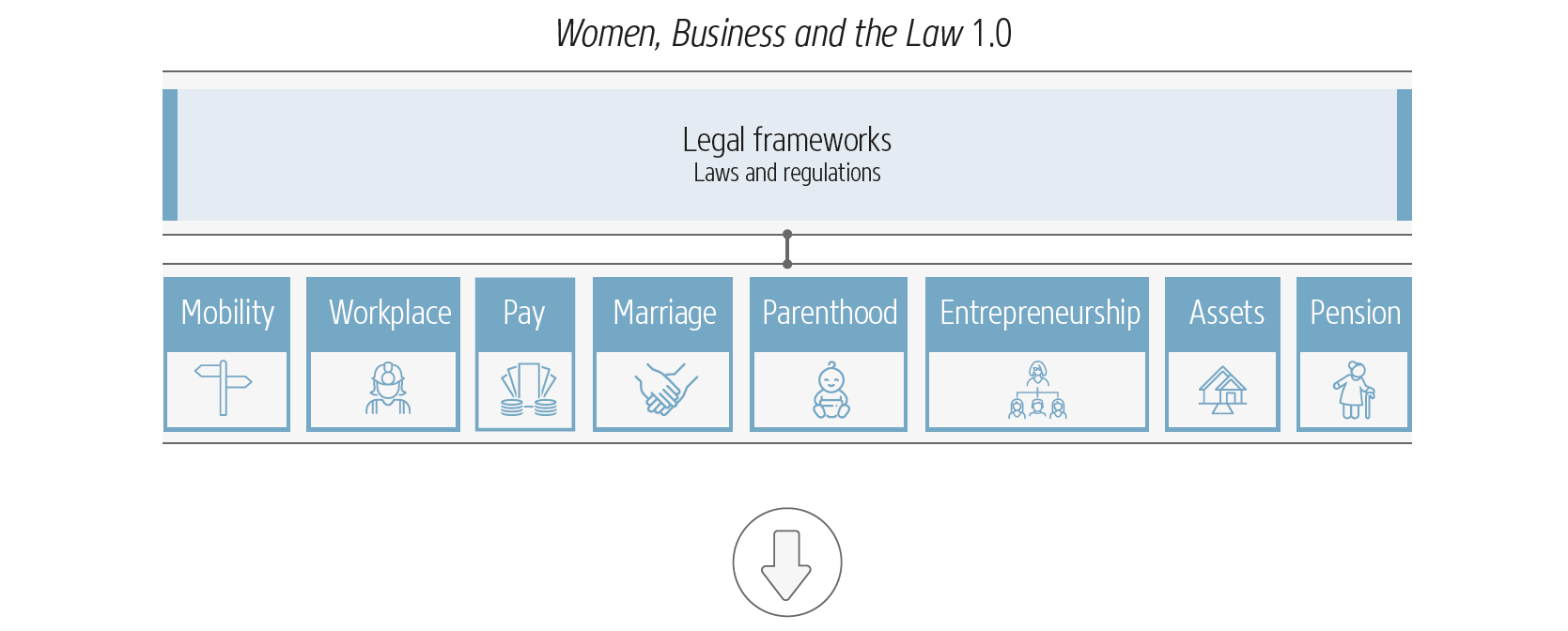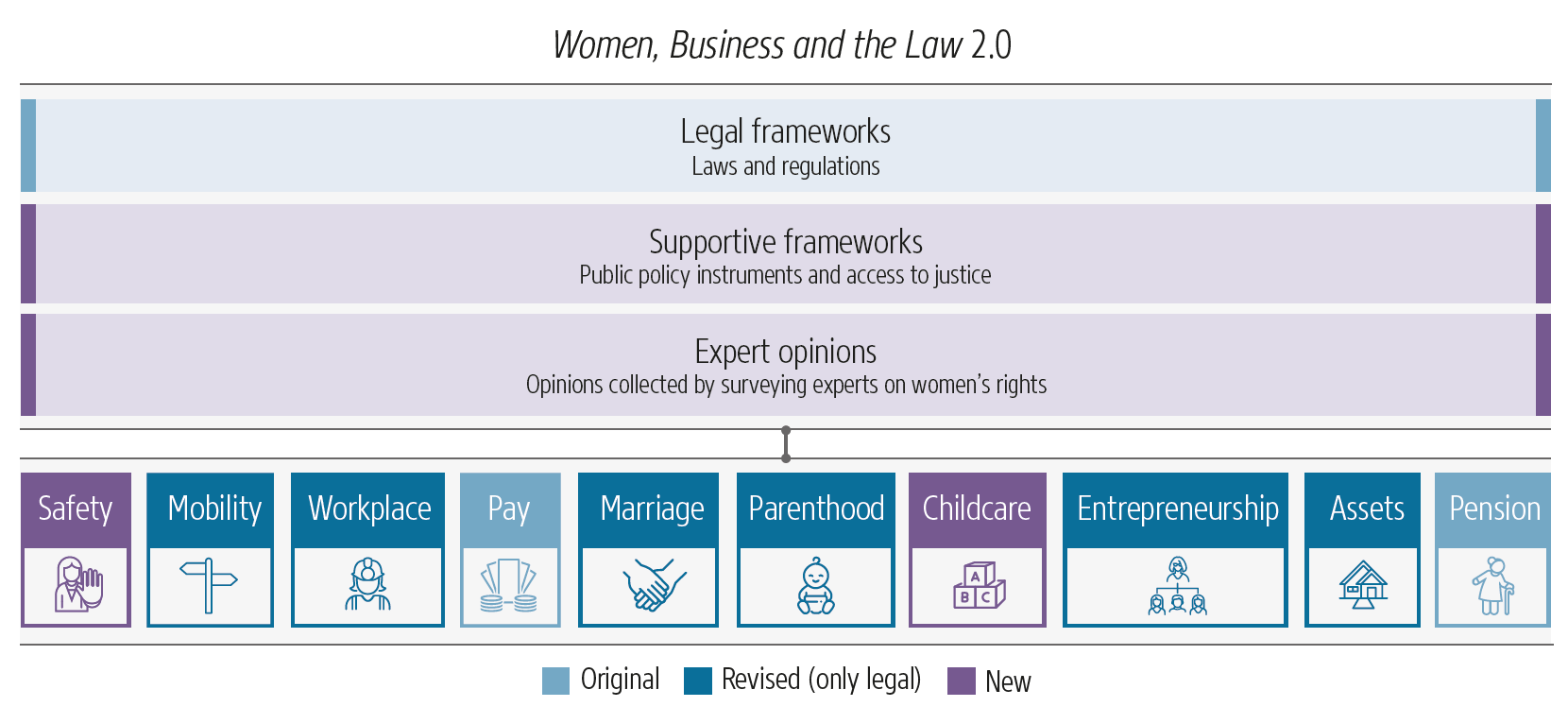Description

Disclaimer: Copyright infringement not intended.
Context
- Recently, The "Women, Business and the Law 2024" report was released by the World Bank Group.
The Report
- This annual report analyzes laws and regulations affecting women's economic opportunity in 190 economies.
- It provides in-depth analysis of the challenges obstructing women's entry into the global workforce, hindering their ability to contribute to prosperity for themselves, their families, and their communities.
Women, Business and the Law 2024
- Women, Business and the Law 2024is the tenth in a series of annual studies measuring the enabling environment for women’s economic opportunity in 190 economies.
- This edition of the report updates the Women, Business and the Law0 index of eight indicators, structured around women’s interactions with the law as they begin, progress through, and end their careers: Mobility, Workplace, Pay, Marriage, Parenthood, Entrepreneurship, Assets, and Pension.
- Women, Business and the Law0 sets a new frontier for measuring the environment for women’s economic inclusion across three pillars: legal frameworks, measuring laws; supportive frameworks, measuring policy mechanisms to implement laws; expert opinions, shedding light on experts’ perception of women’s outcomes.
- Women, Business and the Law0 also introduces two new indicators: Safety, measuring frameworks addressing violence against women, and Childcare, measuring frameworks for the availability, affordability and quality of childcare.
- Data in Women, Business and the Law 2024are current as of October 1, 2023. By examining laws and policy mechanisms affecting the economic decisions women make as they go through different stages of their working lives, as well as the opinions of experts on the legal environment for women’s economic inclusion, Women, Business and the Law makes a contribution to policy discussions about the state of women’s economic opportunities.


Findings of the Report
- It has revealed that legal rights for women worldwide are significantly lower than previously perceived.
- Contrary to earlier estimates that projected women had 77% of the rights enjoyed by men, the report found that women actually have less than two-thirds, or 64%, of these rights.
- This highlights a substantial gap in legal protections for women, particularly in areas such as violence and childcare.
Economic Impact of Legal Reforms
- The report emphasizes that eliminating discriminatory laws and practices hindering women from working or initiating businesses could result in a more than 20% increase in global gross domestic product (GDP).
- Such reforms have the potential to double the rate of global growth in the upcoming decade, according to the World Bank.
Performance of India
- India's rank in the report improved marginally to 113, with a score of 74.4%.
- While the country's score has remained constant since 2021, its ranking witnessed a decline from 122 in 2021 to 125 in 2022 and further to 126 in the 2023 index.
- Indian women have just 60% of the legal rights compared to men, slightly below the global average of 64.2%.
Challenges in India
- India receives one of its lowest scores in the indicator evaluating laws impacting women's pay.
- To enhance this aspect, the country could explore measures such as mandating equal pay for equivalent work, permitting women to work at night on par with men, and enabling women to engage in industrial jobs on an equal footing with men, as recommended by the World Bank.
Supportive Frameworks
- India scored higher than both the global and South Asian averages in supportive frameworks. However, the lowest indicator in frameworks was childcare.
- The report recommended creating a publicly accessible registry or database of childcare providers and implementing a well-defined application process for parents seeking government financial support for childcare services, among others.
.jpg)
Global Gaps
- Globally, the report found a wide practical gender gap in assessing the disparity between legal reforms and actual outcomes for women.
- There is a substantial implementation gap, with countries, on average, establishing less than 40% of the required systems for full implementation.
- For instance, while 98 economies have enacted laws mandating equal pay for women, fewer than one in five have adopted measures or mechanisms addressing the pay gap.
Conclusion
- The report underscores the urgent need for legal reforms and public policies to empower women to work and engage in business.
- Effective implementation of equal-opportunity laws necessitates a robust supporting framework, including strong enforcement mechanisms, gender-related pay disparity tracking systems, and accessible healthcare services for women surviving violence.
ACCESS FULL REPORT HERE: https://openknowledge.worldbank.org/server/api/core/bitstreams/d891abb1-ca9c-42cd-989f-32d3885189a2/content
|
PRACTICE QUESTION
Q. Which of the following is NOT one of the indicators used in the Women, Business and the Law 2.0 index to measure the environment for women's economic inclusion?
A) Safety
B) Workplace
C) Entrepreneurship
D) Education
Correct Answer: D) Education
|















